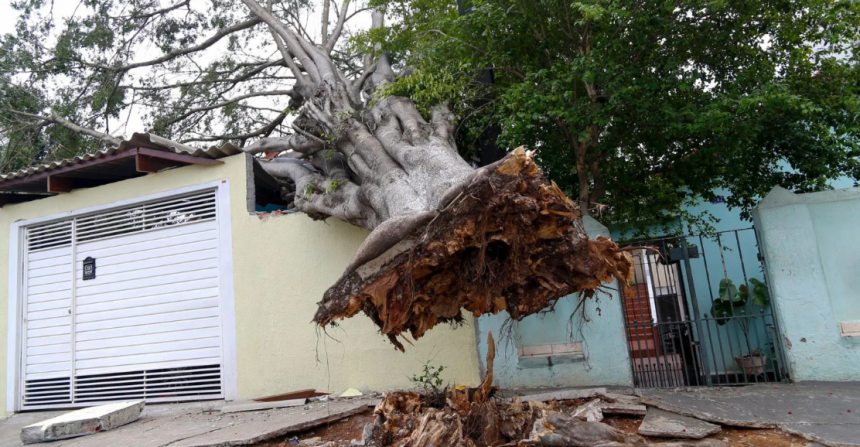At least eight people have died, and thousands are stranded without power following violent storms that swept across Brazil on Friday. The central and southeastern regions of the country faced winds reaching up to 100 km/h (60 mph) and daily rainfall amounts of up to 10 cm (4 in), as reported by the National Institute of Meteorology.
In São Paulo, Brazil’s most populated state, seven fatalities have been confirmed, primarily due to falling trees and collapsing infrastructure caused by the strong winds and heavy rainfall. Residents described the sudden downpour in the southeastern state as brief yet extremely intense.
Since Friday, large areas of São Paulo have experienced blackouts, with reports of water supply issues. The energy company Enel announced that over 1.3 million homes and businesses are still without electricity, aiming to restore power by Monday.
In response to the prolonged outages, residents of the Parque São Roberto neighborhood held a pot-banging protest on Saturday after enduring more than 24 hours without electricity.
In the capital, Brasília, one soldier was killed, and another injured at the military police headquarters due to the storms. The rain was so heavy that local media reported officials inside the Chamber of Deputies—Brazil’s lower house of Congress—had to use umbrellas indoors to shield themselves from leaks in the roof.
Despite the destruction, many in Brasília welcomed the storm as much-needed relief after experiencing over 165 days without rain. Brazil has been grappling with its worst drought on record, a situation largely attributed to climate change and the El Niño weather phenomenon.
This dry spell has exacerbated wildfires across the country, devastating large portions of the Amazon rainforest and Pantanal wetlands and filling major cities with smoke. Government data indicates that wildfires in the Amazon surged to a two-decade high in July.



